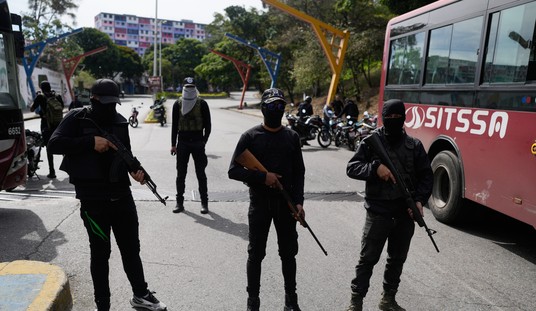I love survival shows. Les Stroud is the OG survivalist, being one of the first tv hosts to strand himself in remote areas with nothing but his cameras and limited survival gear. I was obsessed with his show, Survivorman. I’m not sure what was more appealing – the insane situations he put himself in or the MacGyver factor. Stroud showed viewers how to use every little thing, from trees to trash, for survival in wilderness locations.
Since Stroud’s groundbreaking show, many copycats have popped up. From Bear Grylls to Naked and Afraid, our fascination with wilderness survival has only grown.
It’s hard to qualify our growing obsession with survival entertainment, but the answer may be found in one show, a stand-out from The History Channel called Alone.
Alone borrows from survival show originals like Stroud, but ups the ante and the difficulty. The stakes are much higher, and the struggle much longer. Eleven trained survivalists are dropped off in separate remote areas of rough wilderness. The location changes season to season, and has included locales in Alaska, British Columbia and even Mongolia. Each contestant is allowed to bring ten items of their choosing and is provided with filming equipment, an emergency first-aid kit, and a radio for communications with base camp (producers perform regular medical checks on contestants and arrange drop-off locations for battery packs and filming supplies). The last one standing wins a hefty cash prize. Seasons can last as long as 100 days.
There is, of course, that MacGyver aspect that is so fascinating. It is truly incredible to watch these people use their knowledge and limited tools and resources to build shelters, start fires, hunt and fish. It’s especially fun when some contestants are able to move from surviving to thriving, and make projects to help bide their time.
One woman spent her extra time rebuilding the fireplace in her shelter and ended up creating a masterpiece that many people would pay good money to have recreated in their comfortable homes. One man made himself a deck of cards out of tree bark, another made an exquisite dice set. The man who made the cards had been so successful in finding food sources that he created an entire little village for himself, with a smokehouse, chairs, card table and a laundry line. His shelter was perhaps one of the sturdiest in the show’s history. He tapped out early, with many weeks to go until a winner emerged. The loneliness proved to be too much for him.
That is what sets this show apart. Yes, it is raw survival and we get a front row seat. It’s exciting when you can experience the thrill of survival without the pain of survival. But it is not simply the ingenuity of the contestants that is so riveting, it is the exclusive peek into the condition of the human spirit.
What you find as you watch each survivalist go through the motions of settling into wilderness life, is that the body can be wrestled with, but the mind is the true enemy of success. As the season wears on, some contestants are forced to stop by their deteriorating health. More often than not, they choose to tap out because they cannot tolerate the isolation.
They are completely alone, save for the occasional medical checks, when they are only allowed to speak about their health status. Total isolation is something that has been used for punishment or torture. While the survivalists volunteer for the task, there always comes a point where the exercise turns into punishment, and torture.
You can hide from bears and other creatures, but you can’t hide from yourself. Modern Americans are surrounded by noise. We have phones, televisions, music, cities, school events, concerts, traffic, alarm clocks…there is audial input from every corner of our lives. Once the initial peacefulness of the adventure passes, Alone participants are left only with their thoughts. It gets worse as fall turns to winter and the days get shorter. There are few hours to work, and too many hours to pass in the quiet dark, waiting for day to break again.
Even the most introverted cast members eventually begin longing for the company of their families. It is surprising how expressive and emotional the men become when they’ve been separated from their wives for a while. To a man, they all pine for their partners, and pledge to never take their time together for granted ever again. It’s sweet, but it is also a poignant reminder that we are built for companionship, and while committed partnership has its challenges, it is right and it is good. It is sustenance. All of the married male participants come to the realization at some point that what gives their lives meaning is working for their families. Being alone for months on end begins to feel painfully selfish and pointless.
The women, of course, have similar emotional revelations but they don’t seem to be as intense. That can probably be chalked up to gender differences. Women are generally more aware of their emotions and family attachments. For most of them, the struggle is largely physical, as they learn to endure the harsh conditions with no help. Hauling firewood and keeping toes warm becomes a major challenge for almost all of them. I might even venture to say that the women are more mentally equipped for the long haul, but their bodies can rarely hang in to the end.
It’s an interesting dichotomy. The entire show is a wonderful study in human nature.
What happens to a man when he is separated from everything and everyone that gives him purpose, and forced to live off the land in total isolation? As many of the contestants will tell you, the mind can become your greatest enemy. In isolation, it takes an extraordinary will to tame the mind long enough to assist the body in the task of survival.
Of course, there is also the tap out button. Not only do these people have to contest with their loneliness, they also have to cope with the idea that they could end their misery with the push of a button. They could hail the base camp team and be immediately lifted to safety, a shower, clean clothes and a hot meal. Not only is Alone a study in survival, it is a study in character. It must take an astounding amount of self-denial to know you can end your discomfort, and choose to suffer anyway.
Alone is not just a flashy survival show. It’s a gritty look at what makes us all tick. It makes us ask questions of ourselves.
Could I survive alone, for the three coldest months of the year, in the remote wilderness? How would I build my shelter? What would I eat? Would I talk to myself a lot, or not at all? Would I talk to God a lot, or not at all? Would I make myself a Wilson, a la Castaway? Would I finally be able to say things to myself that I’ve really needed to admit out loud? What clarity would I find? Would I like myself more or less when it was all over?
So many questions, and each contestant is forced to face them all, with cameras in hand, even as they fight for the very basics of survival.
Alone is one reality show worth binging. The nine seasons are spread out across various platforms, so it’s best to do a search to find out which ones are where, but if you want to start most recently and work backwards, the most recent complete season has just been released to Netflix. You can also find most episodes on the History Channel website.
If I’ve learned anything from this latest season, it’s that the mind is a scary thing…but so are bears.














Join the conversation as a VIP Member